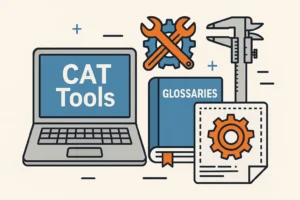Learn how to translate mechanical engineering documents into Chinese with accuracy and cost-efficiency.
What makes mechanical engineering translation so challenging?
Mechanical engineering translation is one of the most challenging projects to handle. For a seasoned, professional translator, the most rewarding part is the final output.
Mechanical engineering is one of the essential fields in both academic and business. It has to do with machinery and mechanical equipment.
But it requires the collective work of specialists, masters, or experts in the translation process. The words and terminologies are complicated because of its specialized vocabulary.
READ MORE >>>How to Save Thousands of Dollars from Rush Translation on Legal Contracts
There are two key ways to maintain the quality of mechanical engineering translations:
- Use technical terms in the correct context.
- Avoid literal translations that distort the original intent.
Beyond these basics, several professional techniques help ensure technical manuals, specs, and guides serve their purpose effectively.
Whether you’re preparing to translate mechanical reports, engineering SOPs, or maintenance instructions, these insights will help streamline your project.
1. Translate Mechanical Documents Efficiently with CAT Tools
If you regularly translate mechanical specs or manuals, CAT tools will quickly become your best friend.One of the most indispensable tools for professional translators is the CAT (Computer-Assisted Translation) Tool. This software stores bilingual texts in pairs for future reference, ensuring consistency across projects. It archives key terms, phrases, and words, making it especially useful for mechanical engineering translation, which relies on a highly specialized vocabulary.
One of the biggest advantages of CAT Tools is their ability to detect repetitive words and phrases—which translates into cost savings. Instead of paying full price for repeated content, CAT tools allow translators to offer discounts on repetition.
🚀At AZ-Loc, we charge only 10% for repeated content within the same batch. Compare that to the industry standard, where some agencies charge up to 30%! This means significant savings, especially for Chinese mechanical engineering translations, where manuals and technical guides often contain a high number of repeated terms.
2. Tools to Translate Mechanical Engineering Terms Accurately
Not all translators can remember the terminologies and context of the phrases. So, they also use glossary, which is accessible to the internet. Depending on the project, other companies provide glossaries so translators can use them.
Other professional teams of translators have their glossary. They use it for the same company especially if they’re working with long-term projects. Keep in mind that these are supplemental tools but not the only means for translation.
Helphul tips:
Example of these glossaries are: item Industrietechnik GmbH, which supports German to English. dictindustry and Electropedia support several languages, except Chinese.
3. How to Translate Mechanical Texts Correctly Using Grammar and Analysis
The Human Touch in Mechanical Engineering Translation
Nothing beats the human touch—or more specifically, the human mind—when it comes to translation. In mechanical engineering translation, translators often encounter long, complex sentences filled with technical terminology. The key to accurate and precise translation lies in breaking these sentences into manageable parts.
Breaking Down Complex Sentences for Accuracy
To ensure clarity and accuracy, translators divide long sentences into smaller chunks before translating. This step-by-step approach allows them to analyze each part, ensuring that the final translation makes sense both technically and linguistically.
The Role of CAT Tools and Glossaries

While the translator does the heavy lifting, CAT (Computer-Assisted Translation) tools and glossaries play a crucial role in maintaining consistency. These tools help detect repeated terms, suggest appropriate terminology, and improve efficiency.
Rearranging for Chinese Grammar and Expression
Once the meaning of the sentence is clear, translators restructure the translated parts to follow Chinese grammar and natural expressions. For example, English texts often use the passive voice to describe operations and processes. However, in Chinese translation, these structures must be adapted to ensure that they reflect the accuracy and intent of the original text.
By combining human expertise with technological tools, translators can produce high-quality mechanical engineering translations that are both precise and readable.
Do you find this thought-leadership piece article helpful? Do you need help to translate mechanical engineering documents accurately and affordably?Feel free to contact us or grab this Chinese New Year promo to get you started on your goals this year.
